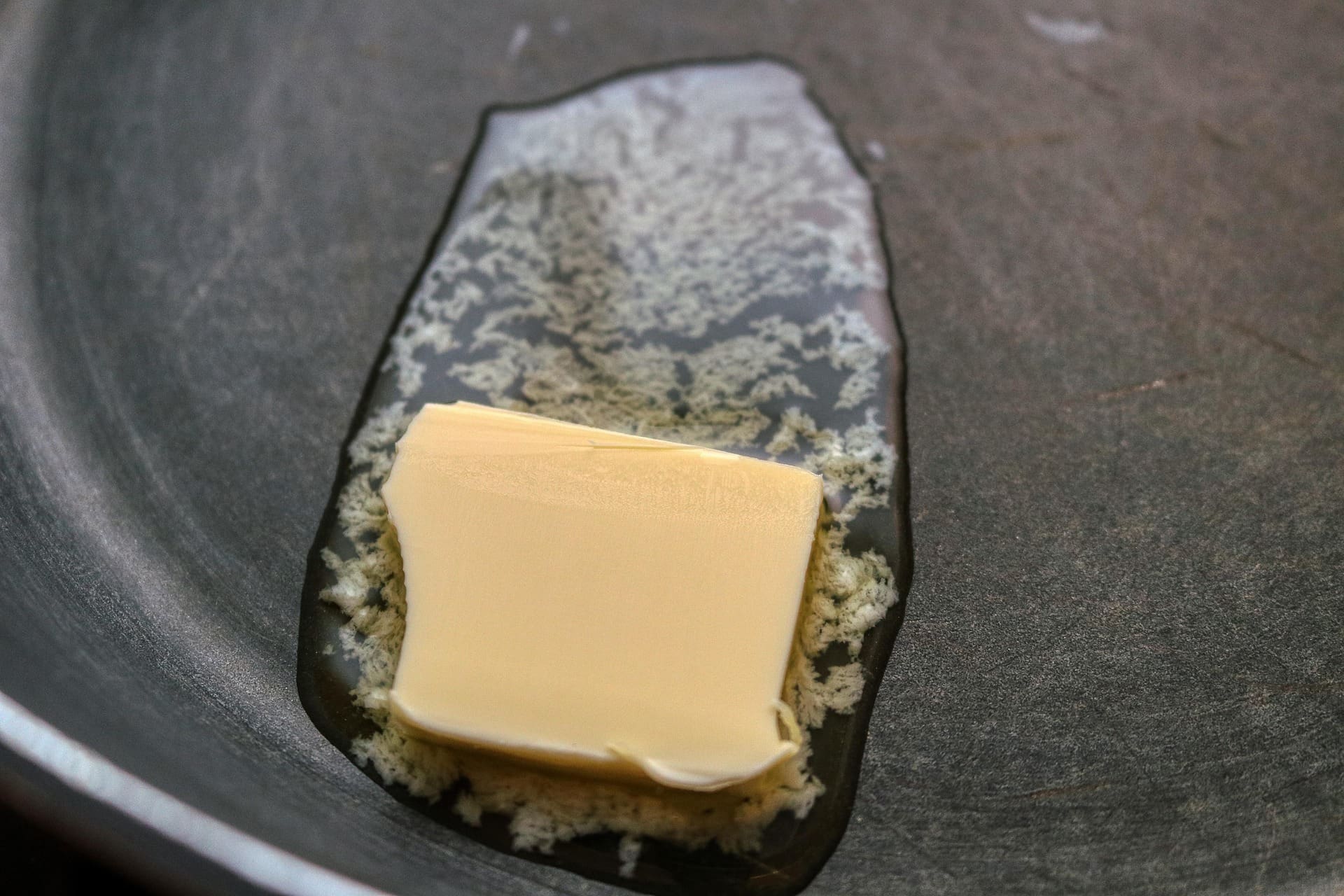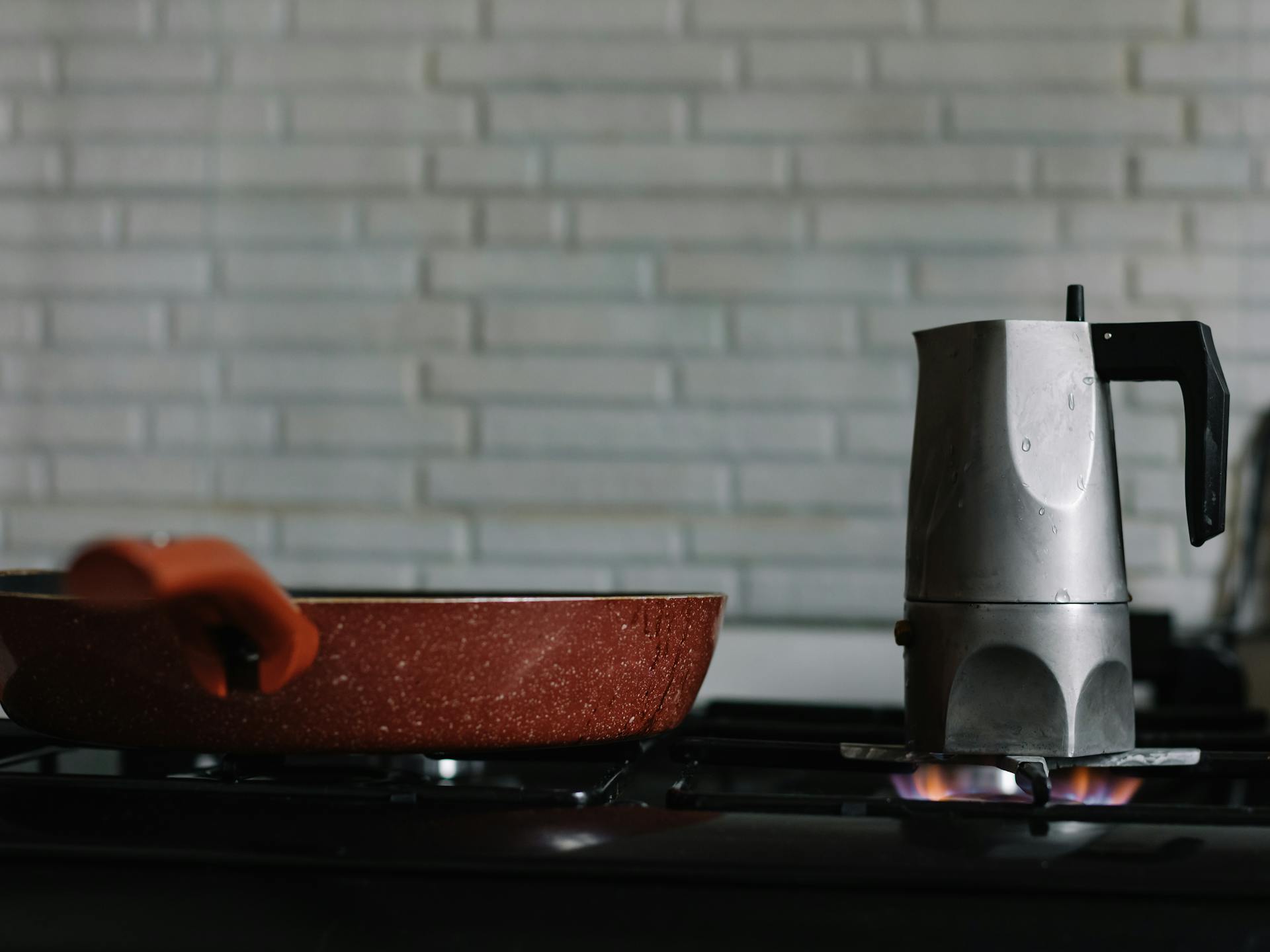
How to Clean Non Stick Frying Pans (100% Scratch-Free)
You're looking at that burnt-on oil on your nonstick pan, feeling totally stuck. I get it. It seems like a no-brainer: just scrub it off, right? But then you have to worry about the delicate coating. "Will it lose its non-stickiness?" "Am I gonna have to throw this one out again?" Well, fear not. Today, I’ll explain exactly what to do, so you can get back to cooking what you love.
Materials List
My family's been into nonstick cookware since I was little. Our methods have worked well so far. Here's what you'll need:
- A really soft sponge that won't scratch.
- Mild dish soap (natural or eco preferred for gentleness).
- Scrub Daddy and Bar Keepers Friend (for cleaning the back of the pan).
- Rubber gloves (for skin protection while using BKF).
- Microfibre towel (for quick drying).
- Cooking oil of any kind.
- Optional: Vinegar (white).

The Preliminary Soak
With the pan in the image, you might be tempted to get right into scrubbing. This would be a mistake, and here's why.
Understanding nonstick coatings
First, let's understand what these coatings are made of. It’s usually PTFE, or its full name: polytetrafluoroethylene. Don't worry, I can't pronounce it either. What matters is that it’s man-made, built by linking tiny building blocks into long chains. Imagine a giant sheet of smooth LEGO pieces laid across your pan. This sheet is what creates that smooth gliding when eggs go in. It's also what makes cleaning very easy when the coating's intact.
Why this matters
So PTFE lasts a lot longer than people give it credit for if you soak instead of scrub burnt-on oils like this. Usually a 15 minute soak with gentle cleaning products lifts the majority of grime.

Heating the cleaner like some guides suggest isn't even needed. It's about giving the grease time to break down. And this ties back to why I choose soft products. It's because of this extended soak time. PTFE (or Teflon - the main PTFE brand) is quite vulnerable and needs gentle treatment to last. So let's start with that approach right now:
1. Fill the pan with hot water.
2. Add a few squirts of mild dish soap.
3. Wait 15 minutes or more depending on how badly soiled the pan is.
4. Tip the water out and rinse the bubbles with hot water again.

Step 1 - Clean with a non-scratch sponge
Most of the grease that you had trouble with before should be loose. If some patches still won't move, a layer of baking soda will give your sponge some extra grip. Avoid steel wool or anything that aggressive. But remember, even with baking soda, you still need mindfulness. If food doesn't literally fall off, your best bet is to do a re-soak until it does.
For super stubborn grease
If worst comes to worst, coat the burnt bits with vinegar and submerge under more water. In rare cases the previous steps didn't suffice, heating a vinegar mix helps. 15 minutes on medium heat and periodic stirring should be enough to loosen any charring. But some other questions to ask are: why is a nonstick pan sticking this much? Is it maybe time to get it replaced?

Step 2 - Clean the back
If the back looks like this, all it needs is Bar Keepers Friend and some elbow grease. Another point I want to make is when you're serving, there's going to be juices that ooze out the side. You need to go over these lightly with your sponge or wipe them up at least. Otherwise, you'll be burning and re-burning all this food residue back into the pan.

Step 3 - Rinse, dry, and re-condition
As we discussed, PTFE needs babying. And so it's expected after that semi-intense clean, it needs some oiling. Back to the LEGO analogy, microscopic building blocks always have gaps. And so after we rinse and dry, a brush of oil helps prime the surface for our next cook. At home, it's always olive or extra virgin olive oil, but any lubricating cooking oil works. Fire up the stove on medium for about 3 minutes to bake in the fats, do a paper towel dab, and it'll be ready to store.

Step 4 - Use compatible utensils
While metal utensils sound satisfying, they're to be avoided. I handle stainless steel pans with silicone also. It's by far my favourite. It's soft enough for frequent moving, and it never scratches. Nylon is a great alternative but it doesn't withstand heat quite as well. What I like to do with spatulas is always keep them in a small unused bowl whenever I'm waiting for food to cook. I've found that wood also has good compatibility. Though, when it chips, it doesn't feel as hygienic. With wood, when it gets older, I need steel wool to get a thorough clean on it. But that might just be because it needs replacing!

Some maintenance must-knows for nonstick pans (and nonstick cookware in general)
Season new pans immediately
Whenever we buy new pans, the first thing is always washing and seasoning. Just a quick water rinse, dry, and then a light surface oil brush is all that's needed, since it's new after all. Many suggest vegetable, canola, or avocado oil since they have higher smoke points. But if you're using medium heat, this isn't really a concern. This step's important as you don't know what the pan went through in manufacturing. Be it machinery oil, dusts, or fingerprints - you can't be sure. To be safe, always use this tactic when opening new packages.

Avoid high-heat cooks and sears
Whether pan makers educate us enough or not about the best use cases of their pans isn't our concern. The fact is, non-stick pans aren't as suited to high temperatures as the others. For you and me, this means ideally searing your steaks over stainless or cast iron pans.
The best thing is to stay with low to medium heat, since PTFE melting is very possible. Besides melting and warping, the surface is also non-stick in nature. Meaning you'll also likely get a less than ideal char on meats. With all this said, unless you own a premium non-stick brand, it shouldn't go near an oven either.
Store your pans safely
In our home, pots, saucepans, and frying pans all live in the same cupboard. There's going to be some friction and ricochet. For our fragile pans, this means protection is non-negotiable. In our household, you'll find napkins or baking paper at least between each piece of cookware.

This helps cushion the inevitable bumps when we move items in and out of storage. If you're savvy, you can also use pan protectors as an alternative. Best case is not having to stack anything at all. If you can hang them on hooks, you'll avoid all this entirely.
Stay away from non-stick sprays (or any cooking spray)
Despite its alluring name, it's best not to use these to refresh 'non-stickiness'. Reason being, the spray's chemicals accrue on the pan's surface over time. This buildup makes the pan much harder to clean as it becomes stickier. From there, it'll be even harder to get off, and if you do manage, your coating will likely see some damage.

Pay attention to your cooking (don't walk away!)
It sounds obvious, but one of the quickest ways to cut the lifespan of your nonstick pan is letting food burn. And sure, you can usually clean the pan afterwards, but that doesn't mean the coating gets away with it. Each time food burns on, it requires more abrasive scrubbing to restore it back to its original state. And for our delicate PTFE coating, that's not good news.
An advanced tip: don't store food in the pan, especially acidic foods
Whenever we cook pasta, Mum always individually plates leftovers. There's good reason for this. These pans aren't meant for acidity. Things like pasta sauces, tomatoes, or wine-based dishes do them no good. Acids eat away at the PTFE, which is why we always make it a rule to transfer everything out immediately.

FAQ
How often do nonstick pans need changing?
It depends on the quality, the brand you're buying, and how much you cook. Budget pans might last 6 months, while higher-quality ones can go for years. Here's the thing though. Many pans claim to be Teflon, but as customers, it's nearly impossible to verify actual quality. Generally though, from my experience, you get what you pay for. Visible scratches, flaking, or food starting to stick are all signs to be watching.
Are dishwashers recommended?
In short, no. Dishwashers use high heat, strong waters, and harsh detergents. Over time, this can erode the nonstick layer and dull the pan’s performance. Hand-washing is always safer long-term, so even if it says 'dishwasher-safe', don't buy into it. That said, respecting other brand-specific advice the manufacturer gives isn't a bad idea.

Can I get away with continuing with the pan if it's just light scratching?
This is a common thing people contemplate, and you actually can. Latest research shows flaky PTFE ingested in small amounts is not a threat. See this Q&A on Columbia Health if you'd like reassurance.
What are some other things that shorten nonstick lifespans?
A big one is letting your pan heat up without any fats or oils in it. This is known as dry heating. And I'm guilty of this too sometimes. I literally forget, and zone out thinking about something else, and then this happens. The problem is that without oil to distribute heat, you get hot spots that damage the coating. Definitely try avoiding this. I've started making it a habit to add oil before even turning on the heat. I also have a silicone brush handy for even oil distribution.

Should you clean when the pan is hot or cold?
Cleaning while it's hot makes things much easier, but avoid shocking the pan with cold water. At home, we try to match temperatures if we can. So what I'll do is, I'll wave the pan up and down in the air first to cool it down. Then I'll use hot water for cleaning. This helps you achieve a similar temperature, while at the same time prolonging your pan life. It's also very useful if you want to cook dishes in that pan back-to-back.
A final message to my nonstick advocates
Understanding the pros and cons of your nonstick cookware is critical. With all the benefits like easy cleaning and less oil needed, these pans deserve proper care. And while they might not last for years, using these tips will help you get the most life out of your pan.
Related articles
One on cleaning cast-iron pans

